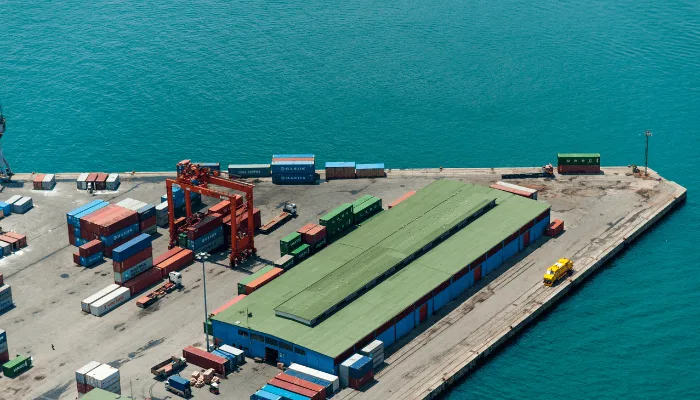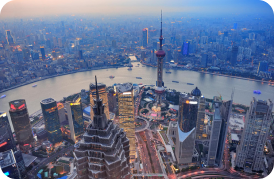
Introduction
India has become one of the largest consumers of polyethylene (PE) in the world, driven by rapid industrialization, urban expansion, and rising consumer demand. Despite having several petrochemical complexes, domestic production is not sufficient to meet the growing needs of packaging, agriculture, automotive, and infrastructure sectors. This has made India heavily reliant on imports of polyethylene, especially grades like HDPE, LLDPE, and LDPE.
For exporters in the Middle East, CIS, and Asia-Pacific, India represents a lucrative, high-growth market. But to succeed, exporters must understand why India depends on imports, which PE grades are most in demand, and how regional trade flows are shaping competition.
Why India Depends on Polyethylene Imports
Growing Demand-Supply Gap
India’s polyethylene consumption is growing at 7–8% annually, outpacing domestic production capacity.
Packaging Boom
With e-commerce, FMCG, and food sectors expanding, PE for films and flexible packaging is in high demand.
Infrastructure Projects
Large-scale use of HDPE pipes in irrigation and water supply is a major driver.
Limited Capacity Additions
While India has upcoming petrochemical plants, new capacities are often delayed due to financing and environmental approvals.
Table 1: India’s Polyethylene Import Volumes by Type (2023–2025 Projection)
| Year | HDPE (Million Tons) | LLDPE (Million Tons) | LDPE (Million Tons) | Total Imports (Million Tons) |
|---|---|---|---|---|
| 2023 | 1.8 | 1.4 | 0.9 | 4.1 |
| 2024 | 2.1 | 1.6 | 1.0 | 4.7 |
| 2025* | 2.4 (est.) | 1.8 (est.) | 1.1 (est.) | 5.3 (est.) |
📌 *Estimates based on industry demand growth trends.
Key Exporting Countries Supplying India
India sources polyethylene from multiple global suppliers, but geographic proximity and freight costs play a critical role in competitiveness.
Middle East (Iran, Saudi Arabia, UAE, Qatar, Kuwait) → Account for more than 60% of imports.
North America (USA) → Growing role due to shale-based polyethylene production.
Asia-Pacific (Singapore, South Korea, Thailand) → Secondary but important suppliers.
CIS Countries (Russia, Kazakhstan) → Emerging exporters due to expanding petrochemical projects.
Table 2: Top Polyethylene Exporters to India (2024)
| Exporting Country | Share of India’s Imports (%) | Key Advantage |
|---|---|---|
| Saudi Arabia | 25% | Large-scale production & cost efficiency |
| Iran | 20% | Proximity & competitive freight costs |
| UAE | 15% | Flexible logistics & re-export hubs |
| USA | 10% | Shale gas–based low-cost supply |
| South Korea | 8% | High-quality grades |
| Others | 22% | Mix of Asia-Pacific and CIS suppliers |
Opportunities for Exporters
India’s Long-Term Import Dependence
Even with capacity expansion, India will remain a net importer of PE until 2030.
Middle Eastern Advantage
Shorter transit times from Jebel Ali, Bandar Abbas, and Jubail ensure competitive pricing.
Specialty Grades
Growing demand for high-performance PE grades in medical, packaging, and infrastructure sectors.
Distribution Partnerships
Local partnerships with Indian distributors can help secure long-term contracts.
Challenges to Watch
Import Duties & Tariffs – Shifts in Indian trade policy can affect landed costs.
Port Congestion – High import volumes often cause delays at major ports like Nhava Sheva and Mundra.
Competition from Domestic Producers – Reliance Industries and IOCL are expanding their capacities.
Geopolitical Risks – Sanctions on some exporters (e.g., Iran) can complicate payment channels.
Future Outlook
By 2025, India’s polyethylene imports are projected to cross 5 million tons annually. Exporters who provide cost-efficient, high-quality, and sustainable products will secure a lasting footprint in this market. Middle Eastern exporters are particularly well-positioned due to geographic proximity and large-scale production capacities.

Would you be looking for suppliers in Iran?
- Contact Us today and get connected with producers and export-ready logistics.
- sales@PetroExportHub.com

Related posts
Mono Ethylene Glycol (MEG) serves as a cornerstone for modern antifreeze and coolant formulations, offering reliable freezing protection and heat resi . . .
Explore Solvent 100’s specs, uses, and export opportunities from Iran. Ideal for paint, ink, and adhesive buyers in India, Turkey, UAE, and Africa. . . .
Explore everything you need to know about exporting sulphur from Iran in 2024 — including types, packaging, documents, ports, prices, and top import . . .
Explore Iran’s top ports for petrochemical exports, including Bandar Imam Khomeini, Assaluyeh, and Bandar Abbas. Compare infrastructure, accessibili . . .
Learn the key differences between polypropylene (PP) and polyethylene (PE), their applications, advantages, and how to choose the right polymer for yo . . .
Discover how a Turkish plastics manufacturer reduced costs by 22% through importing HDPE from Iran. Real-world case study by PetroExportHub. . . .
Learn why Iran is a leading exporter of polyethylene (PE). Discover grades, global applications, and how PetroExportHub connects buyers with top suppl . . .
We are here to answer your questions....
Petro Export Hub
PetroExportHub specializes in the export of premium-grade petrochemicals, minerals, and industrial chemicals from Iran, serving international markets with reliability, transparency, and tailored logistics solutions
Tehran Office
Phone:
0214865484 | +989127607241
Address:
Tehran..
China Office
TEL :
0211400
Address:
Zhongzhou Bie Lu, Zhongcheng Street, Yiwu City, Zhejiang Province, China
Quick Access
Quick Access
- Contact Our Sales Team
- Frequently Questions
- Shipping & Logistics
- Become a Partner
- Certificatins & Quality







